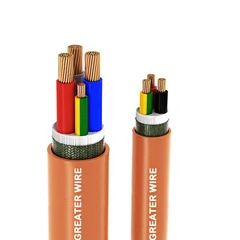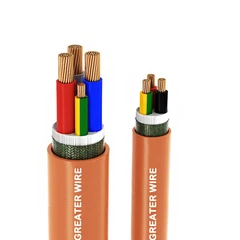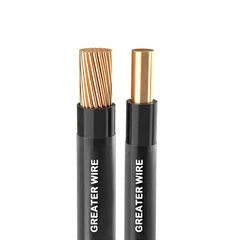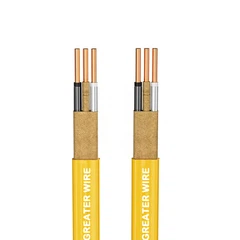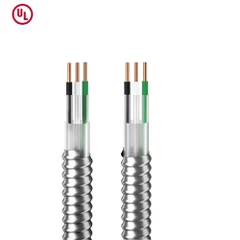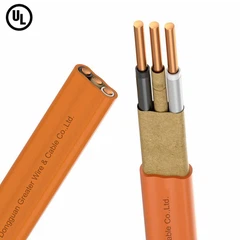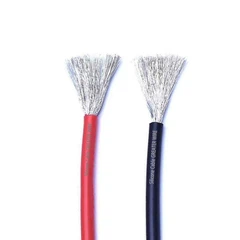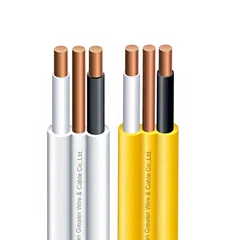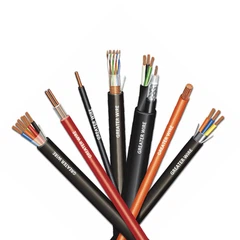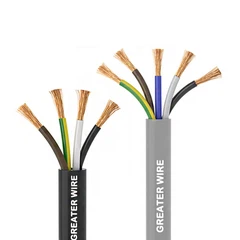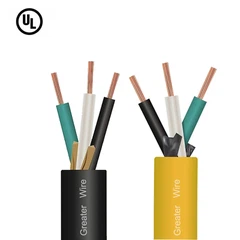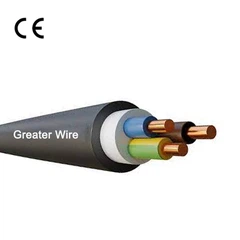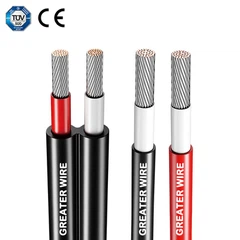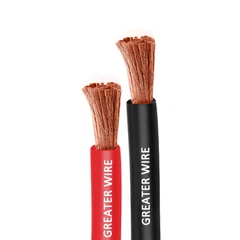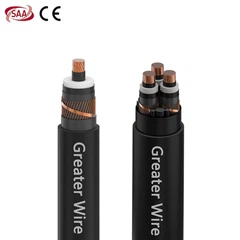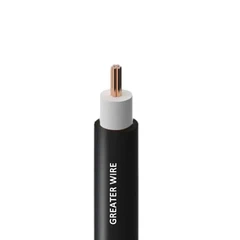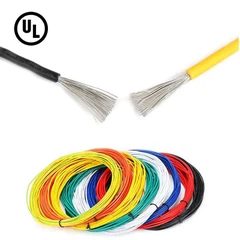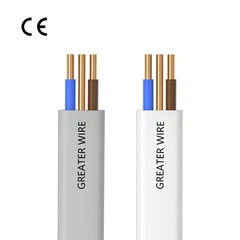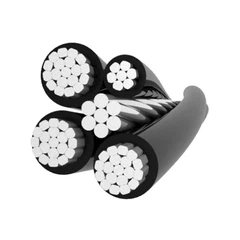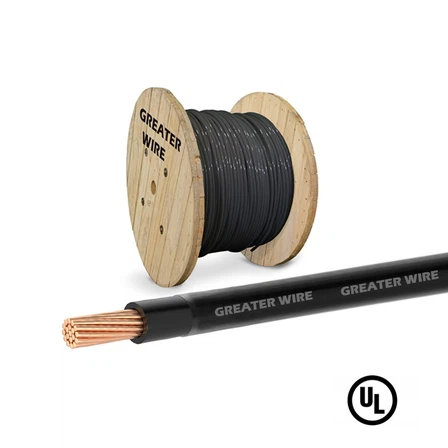1, Naming rules and basic meaning analysis
Before analyzing the three types of wires, we first need to understand their naming origins. THW wire, THHN wire, and THWN wire are all types of thermoplastic insulated wires defined by the National Electrical Code (NEC) in the United States, with each letter representing a performance characteristic:
| Wire type | Meaning Explanation |
| T | Thermoplastic (thermoplastic material) |
| H | Heat resistance: 90 ℃ |
| HH | High Heat Resistance: 90 ℃ or even higher |
| W | Wet (suitable for humid environments) |
| N | Nylon (Nylon outer protective layer) |
We can conclude that:
THW wire :thermoplastic+heat-resistant (75 ℃)+suitable for humid environment;
THHN wire:thermoplastic+high heat resistance (90 ℃)+dry environment+nylon protective layer;
THWN wire:thermoplastic+high heat resistance+humid environment+nylon protective layer (similar to the reinforced version of THHN);
2, Differences in wire structure and materials
1. Conductor material
The three types of wires usually use copper conductors, but aluminum conductors are also optional, but copper conductors are more common. Its structure is divided into two forms: solid and stranded. Stranded copper conductors are softer and easier to construct.
2. Insulation layer
THW wire are insulated with PVC (polyvinyl chloride);
THHN and THWN cables are covered with a layer of nylon sheath on top of PVC to enhance wear resistance and chemical resistance.
3. Protective layer treatment
Nylon sheath is one of the main features of THHN/THWN, which not only improves the mechanical strength of the wire, but also prevents the erosion of the insulation layer by grease, corrosive gases, etc.
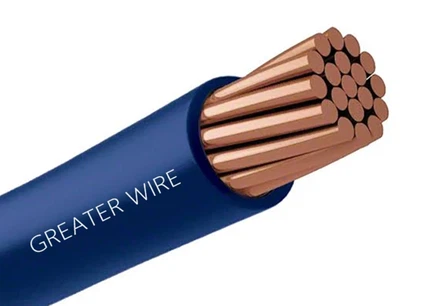
3, Comparative analysis of performance parameters
The following is a comparison of the main technical parameters of three types of wires:
| Item | THW wire | THHN wire | THWN wire |
| Conductor material | copper or aluminum | copper or aluminum | copper or aluminum |
| Insulation material | PVC | PVC+Nylon protective layer | PVC+Nylon protective layer |
| Heat-resistant temperature | 75 ℃ (dry/wet) | 90 ℃ (dry) | 90 ℃ (dry/wet) |
| Can it be used in humid environments | YES | NO | YES |
| Nylon sheath | NO | YES | YES |
| Installation environment | Pipeline/cable tray/exposed laying | Mainly used in dry environments | Both dry and humid environments are acceptable |
| Conventional certification standards | UL83 | UL83 | UL83 |
4, Differences between usage scenarios and applications
1. THW wire
Suitable for residential and commercial buildings' power distribution systems, commonly used for laying in buried pipelines or cable trays. Due to its lack of nylon protective layer, it is not recommended to use it in environments with wear or chemical corrosion risks.
2. THHN cable
It is mainly used in dry environments such as industrial buildings, motor control, and conduit wiring. Its advantages lie in high heat resistance and good wear resistance, making it suitable for laying environments with compact spaces.
3. THWN cable
Combining the high heat resistance of THHN with the adaptability to humid environments of THW, it is a multifunctional cable type that can be widely used in indoor and outdoor pipeline wiring, water pump systems, outdoor power supplies, and other fields.
5, Differences between regulations and standards
The National Electrical Code (NEC) in the United States has clear limitations on the use of these three types of wires. For example:
THW cable must operate at 75 ℃ or below and be suitable for humid environments;
THHN cable can be used in a dry environment at 90 ℃ and cannot be used in humid places;
THWN cable is also suitable for 90 ℃, but can be applied to both dry and humid environments simultaneously.
It should be noted that many THHN/THBN cables on the market are often "THHN/THWN-2" dual certified products, which means that one cable has dual performance and can be used as needed.
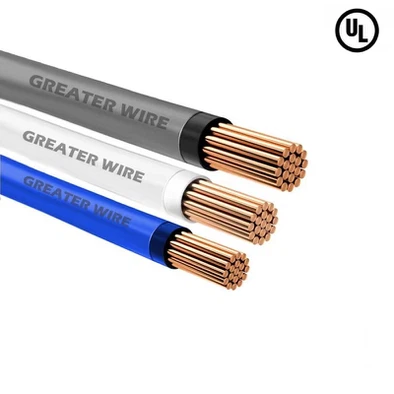
6, Comparison between Construction and Maintenance
Construction convenience:
Due to its nylon protective layer, THHN/THWN cable have better sliding performance when passing through pipes, reducing construction resistance;
The friction coefficient of THW wires is relatively high, requiring more lubricant when threading through pipes.
Bending radius:
THHN and THWN have better flexibility than THW and are more suitable for wiring in narrow spaces;
THW wires are prone to hardening in low-temperature environments, making construction more difficult.
Maintenance lifespan:
The nylon layer can significantly enhance the corrosion and aging resistance of THHN/THWN, with an average lifespan of over 30 years;
The service life of THW wire depends on their operating environment, usually around 20 years.
7, Comprehensive Suggestions and Selection Guidelines
For the convenience of engineers and procurement personnel in selecting wires, it is recommended to refer to the following table:
| Usage environment | Recommended wire types |
| Indoor dry and non corrosive | THHN CABLE |
| Indoor humidity or underground environment | THWN CABLE |
| Limited budget, no special requirements | THW CABLE |
| Outdoor wiring/chemical exposure environment | THWN CABLE |
| Industrial motor control system | THHN / THWN CABLE |
Still unsure which wire fits your project? Greater Wire Manufacturer has more than 30 years of manufacturing experience, and its products have passed UL, SAA, TUV, and other international certifications. If you have any questions about wires or other questions, please consult us!



